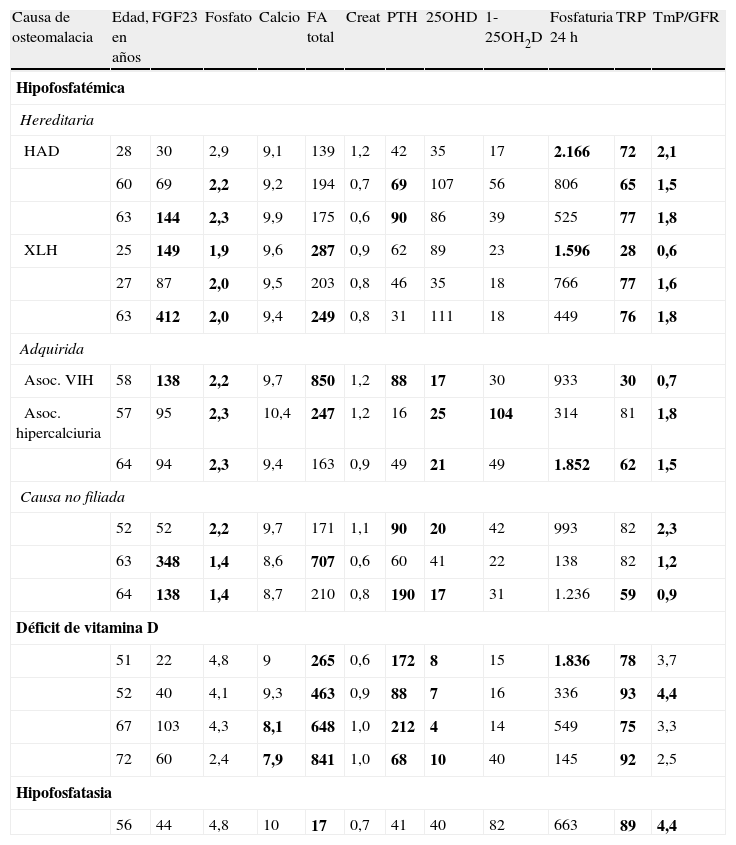El objetivo de este estudio ha sido analizar la utilidad de la determinación del fibroblast growth factor 23 (FGF23, «factor de crecimiento de los fibroblastos 23»), una hormona reguladora del metabolismo del fosfato, en la valoración de pacientes con osteomalacia de distintas causas.
Pacientes y métodoSe incluyeron 17 pacientes con osteomalacia: 12 hipofosfatémica (de distintas causas), 4 por déficit de vitamina D y uno por hipofosfatasia. En todos ellos se determinó el FGF23 C-terminal plasmático.
ResultadosSe observó un aumento del FGF23 en 6/12 (50%) pacientes con osteomalacia hipofosfatémica (2 ligada a cromosoma X, una autosómica dominante, una asociada a tratamiento por VIH y 2 no filiadas). Ningún paciente con osteomalacia por déficit de vitamina D o hipofosfatasia presentó un aumento del FGF23.
ConclusiónLa determinación del FGF23 puede ser útil en la valoración de los distintos tipos de osteomalacia hipofosfatémica y en la identificación del mecanismo etiopatogénico asociado. Así, el 50% de los pacientes con osteomalacia hipofosfatémica, dependiendo de su etiología, tienen un aumento de FGF23, mientras que en la osteomalacia por déficit de vitamina D y en la hipofosfatasia los valores de esta hormona son normales.
The aim of the present study was to analyze the usefulness of the determination of fibroblast growth factor 23 (FGF23), a regulatory hormone of phosphate metabolism, in the evaluation of patients with osteomalacia of different causes.
Patients and methodSeventeen patients with osteomalacia were included: 12 hypophosphatemic osteomalacia (by several causes), 4 vitamin D-deficiency osteomalacia and one with hypophosphatasia. Plasma C-terminal FGF23 was determined in all patients.
ResultsFGF23 levels were increased in 6/12 (50%) of patients with hypophosphatemic osteomalacia (2 X-linked, one autosomal dominant, one related HIV therapy and 2 not elucidated). No patient with vitamin D-deficiency osteomalacia or hypophosphatasia presented increased FGF23 levels.
ConclusionThe determination of FGF23 could be useful in the evaluation of the different types of hypophosphatemic osteomalacia and also in the identification of their associated etiopathogenic mechanisms. Thus, depending on the cause, 50% of the patients with hypophosphatemic osteomalacia showed increased FGF23 values, whereas in vitamin D-deficiency osteomalacia and in hypophosphatasia FGF23 levels were normal.
Artículo
Comprando el artículo el PDF del mismo podrá ser descargado
Precio 19,34 €
Comprar ahora








